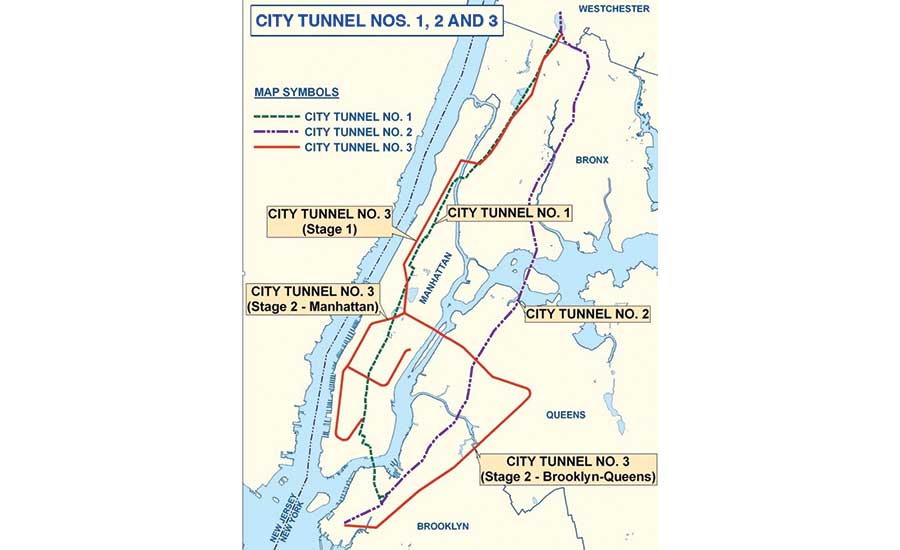Deep under the New York City boroughs of Brooklyn and Queens is a water tunnel waiting for the water to be turned on. Actually, it is waiting for money to flow.
In 1954, the city decided it needed a backup for two water tunnels that carry more than a billion gallons of water a day to the city’s 8 million residents. Conceived in those planning sessions, water tunnel No. 3 will provide redundancy and enable the city to shut down water tunnels No. 1 and No. 2 for inspection and repair for the first time since they entered service in 1917 and 1936, respectively.
The scope of the project was so immense—60 miles of tunnels at a cost of some $5 billion—that it was broken into multiple stages that, for decades, have progressed in fits and starts under multiple mayoral administrations.
The first stage runs through the Bronx and brings water to upper Manhattan, then burrows under the East River into Queens. It went into service in 1998. The second stage has two legs: The first supplies water to lower Manhattan and was completed in 2013; the second, the Brooklyn-Queens leg, is a 5.5-mile-long section in Brooklyn that connects to a five-mile section in Queens. The Brooklyn-Queens leg was completed in May 2001, and six of the leg’s eight shafts were completed in 2006.
As is often the case, the last mile of a project is the most difficult. In this case, drilling a pair of shafts in Maspeth, Queens, is all that is left for completion of the massive tunnel No. 3 project. Reaching down about 600 ft, the shafts will transport water from the tunnel up to the large water-main trunk lines that serve Brooklyn’s and Queens’ roughly 5 million total residents. The shafts will include maintenance access as well as valves and controls, to regulate water flows.
Originally, work on the final shafts was to begin in 2021. But on April 5, The New York Times published an article saying the administration of Mayor Bill de Blasio (D) had removed funding for the project from the budget. That engendered a media kerfuffle in which, the following day, the Times wrote an article clarifying the sequence of budget allocations. That same day, the mayor apologized for his staff’s missteps and accelerated the project.
Construction of the final shafts, 17B and 18B, is now scheduled to begin in 2020, with completion slated for “the mid-2020s,” according to Amy Spitalnick, director of public affairs and spokeswoman for the mayor’s office.
The mayor’s office also clarified the budget questions that led to the confusion in the first place. The original budget called for $336 million to finish the job. The city now says it will cost $357 million.
Spitalnick says there is now $52 million in the budget for siting and design work, and, this spring, de Blasio plans to include in the executive budget another $305 million for the remainder of the project, apportioned as $5 million in fiscal year 2017 (ends June 30), $50 million in FY 2019 and $250 million in FY 2020.
At the city’s Dept. of Environmental Protection, an in-house engineering team already has begun preliminary design work. The final design will be supported by an engineering firm that will be selected through a request for proposals, slated to be issued this summer, a DEP spokesman says.
Details, such as the diameter of the shafts, will be determined during the final design. Further, the city still must acquire the site for one of the shafts. It already owns the other shaft site.
Until geotechnical borings are completed, the DEP says it cannot give an accurate estimate of how long it will take to drill the shafts, but preliminary estimates indicate drilling and blasting will take 27 months. That would bring work on the project into 2023—53 years after work on tunnel No. 3 began.


Post a comment to this article
Report Abusive Comment